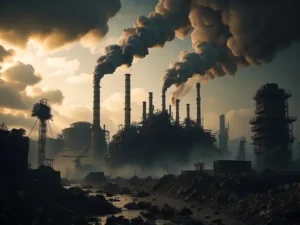Global warming has increased the pace of snow melting which, in turn, has made glacial lakes swell. Ten years ago, the United Nations Environment Program (UNEP) issued a warning that 20 large glacial lakes in the country are in danger of flooding due to the bursting of glacial lakes. This could lead to significant loss of life and property. Various reports suggest that the frequency of such bursts has increased in the recent past. Five glacial lake bursts have already occurred in Nepal from 1977 to 1998. Similarly, global warming has increased the area of Tcho-Rolpa Glacial Lake from an area of 0.23 square kilometre (in 1950) to 1.7 square kilometers now. It can burst at any time. In August 2003, the Kawari Glacier Lake burst, which took away lives of five people, the homes of a dozen people, and property worth US dollar 100,000
In recent decades, there have been many reports of smaller glacial lake bursts. For example, on September 3, 1998, the Sabai Tsho Lake burst, resulting in the deaths of two people and the destruction of fields and hiking trails below it. Similarly, in September 1997, the Dudh Koshi burst, causing damage to a small hydroelectric plant in the area. In July 1991, the Chilbung Lake burst, causing damage to houses in Beding village in the Rolwaling valley. While glacial lake bursts have occurred in the past, their frequency has been increasing lately due to the faster melting of snow.
Rapid melting of snow has led to the receding of the snowline and glacial rivers in the Himalayas. “The Rikhasambha glacier river in the north-western Dhaulagiri valley has receded 100 meters between 1974 and 1994. Nepal has witnessed a disturbance in the mountain climate, flash floods, cloudbursts, and erratic weather patterns such as spatial variability in monsoon conditions, increase in floods, landslides, droughts, and in different parts of the country thick haze in the southern plains in winter. Every year, increasing numbers of people have died in floods and landslides. The temperature rise can result in the enlargement of existing glacial lakes and can cause frequent landslides and floods.
Due to regular snowfall, people in the western Himalayan region have experienced outbreaks of viral influenza and other diseases. Global Warming is raising the temperatures in Nepal, so snow-capped mountains are under threat. Bio-diversity of Nepal is being negatively affected. Glacial melting in the Himalayas is currently occurring at rates as high as 50 feet per year. As a result, the icy base camp is covered in mud. As a result of global warming; Nepal’s annual average temperature has risen by about one degree Fahrenheit. But the temperature in the Himalayas is increasing twice as fast, causing rapid glacial melting which will eventually leave snow-capped mountains snowless and destroy the ecosystem.




